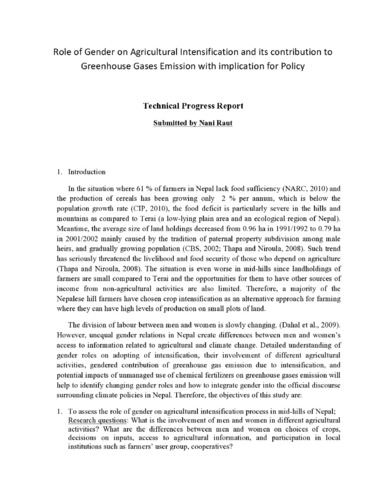Role of gender on agricultural intensification and its contribution to greenhouse gases emission with implication for policy
Abstract
In the situation where 61% of farmers in Nepal lack food sufficiency (NARC, 2010) and the production of cereals has been growing only 2 % per annum, which is below the population growth rate (CIP, 2010), the food deficit is particularly severe in the hills and mountains as compared to Terai (a low-lying plain area and an ecological region of Nepal). Meantime, the average size of land holdings decreased from 0.96 ha in 1991/1992 to 0.79 ha in 2001/2002 mainly caused by the tradition of paternal property subdivision among male heirs, and gradually growing population (CBS, 2002; Thapa and Niroula, 2008). Such trend has seriously threatened the livelihood and food security of those who depend on agriculture (Thapa and Niroula, 2008). The situation is even worse in mid-hills since landholdings of farmers are small compared to Terai and the opportunities for them to have other sources of income from non-agricultural activities are also limited. Therefore, a majority of the Nepalese hill farmers have chosen crop intensification as an alternative approach for farming where they can have high levels of production on small plots of land.

